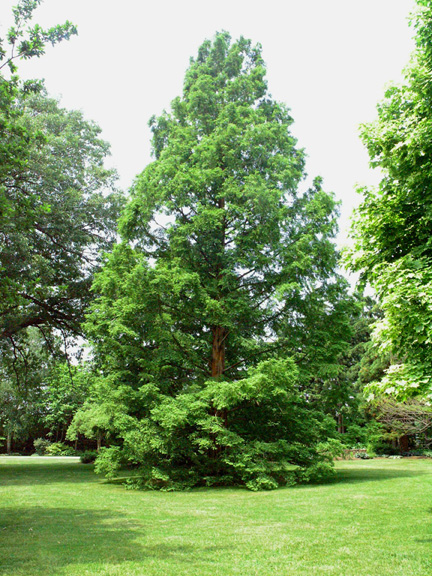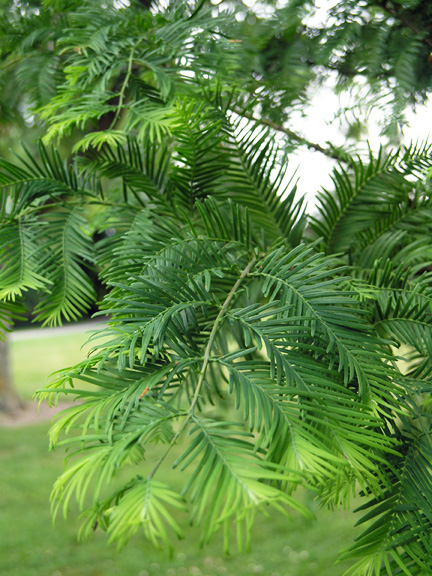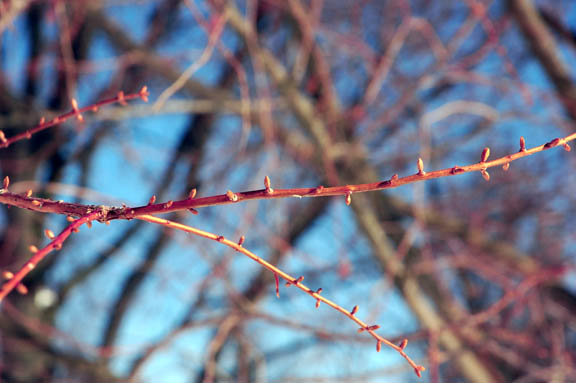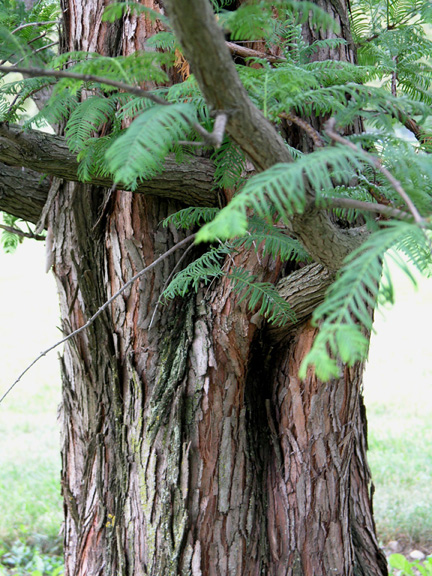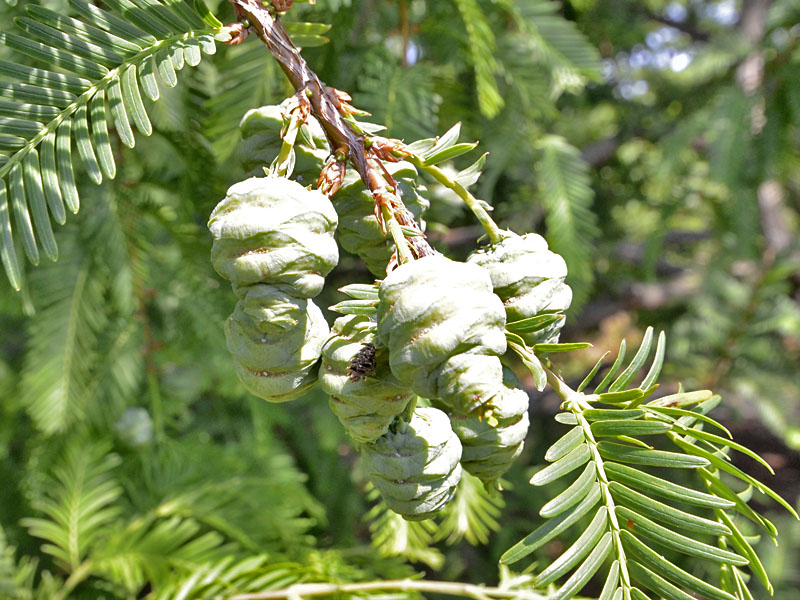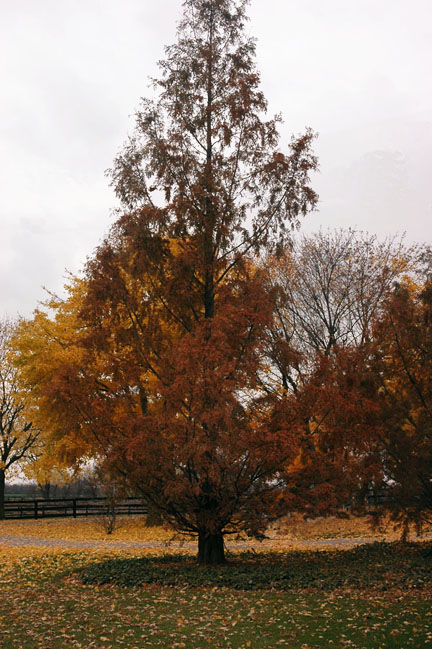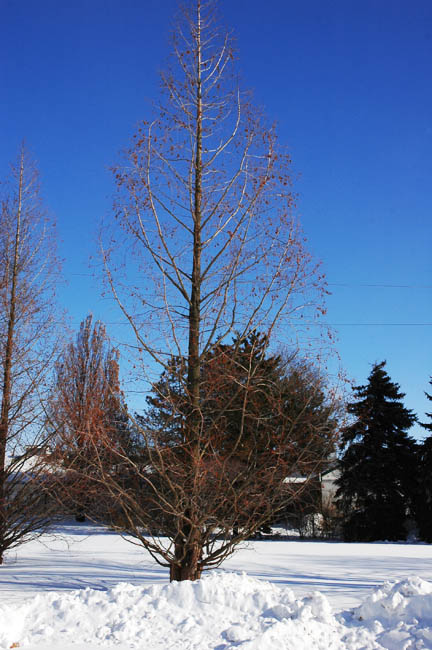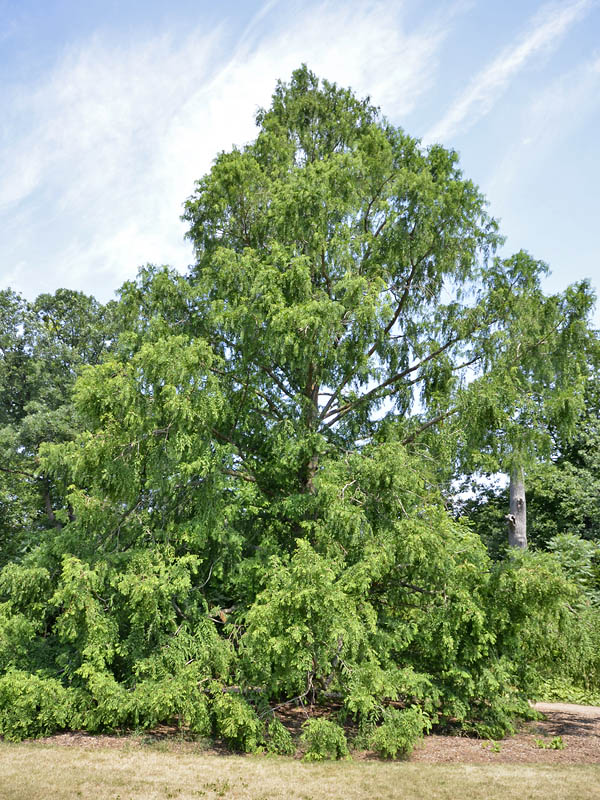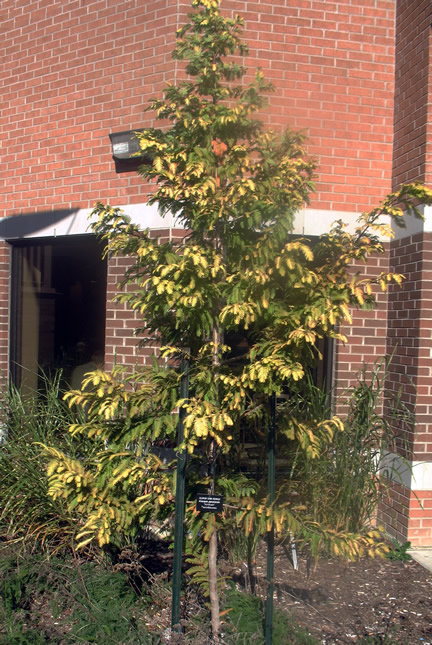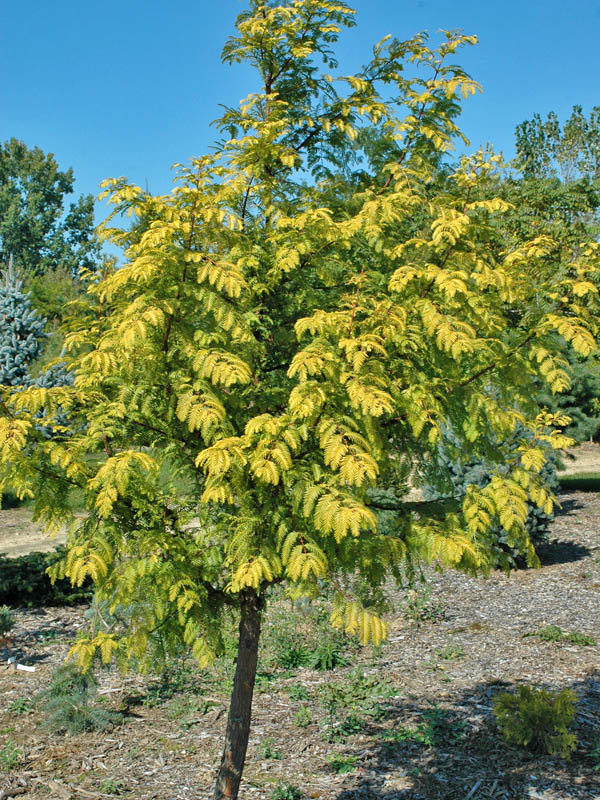
Woody > Metasequoia > Metasequoia glyptostroboides > Metasequoia glyptostroboides
Metasequoia glyptostroboides
Dawn Redwood
Origin: The tree was discovered by a Chinese forester Toh Kan in a remote village in central China in 1941. In 1947 the Arnold Arboretum gave a subsidy allowing Dr. Hsen Hsu Hu and Wan Chun Cheng to gather seeds from China. Seeds were officially introduced in 1948 and the plant was thus named after the fossils of Metasequoia found in Asia. It was first offered for sale in Britain by Hillier in 1949.
Mike's
Opinion


"
This is a class plant that any large garden would be remiss not to include in its plantings. A full season, fast growing, yet well behaved tree. See also the cultivar Gold Rush. I have seen this tree planted to great effect lining a driveway of the founder of NVK Nursery in Waterdown, Ontario, Canada.
Michael Pascoe, NDP., ODH., CLT., MSc. (Plant Conservation)
"
| Family |
| Cupressaceae (Taxodiaceae) |
| Genus |
| Metasequoia |
| Species |
| glyptostroboides |
| Category |
| Woody |
| Type |
| Tree (deciduous) |
| Pronunciation |
| USDA Hardiness Zone |
| 5 - 8 |
| Canadian Hardiness Zone |
| 5a |
| RHS Hardiness Zone |
| H7 |
| Temperature (°C) |
| -23 to (-26) |
| Temperature (°F) |
| -10 to (-20) |
| Height |
| 30 m |
| Spread |
| 8 m |
Photographs
Description and Growing Information
Flowering Period
| General Description |
| Deciduous conifer, with a gracefully conical profile and soft textured, light green, feathery foliage. A fast grower in good conditions, older trees can reach up to 60 m. Open, sparse habit in youth; dense, twiggy upright branching over time. |
| Landscape |
| Scarcely ever needs pruning, is superb for large areas, as well as for bordering walkways and lining streets. It can provide an adequate screen when planted in groups. Can be pruned to make a large hedge. Used in parks, golf courses, or along rivers and lakes. |
| Cultivation |
| Full sun, well-drained, humus, moderately acidic soil. Suffers in drought and drying winds; frost hardy, still needs protection from wind. Easy to transplant. Rarely needs pruning because of its neat, shapely habit. Shouldn’t be in soils with a high pH. |
| Shape |
| Straight trunked: in youth it has a pyramidal conical crown while at maturity it has a broadly rounded crown. |
| Growth |
| Fast |
| ID Characteristic |
| Deciduous conifer, with a 2-ranked opposite leaf and twig arrangement. Has a feathery pyramidal habit, always develops a central leader. Below where branches join the central leader there are indents in the bark. The bottom of the tree is buttressed. |
| Pests |
| Can be prone to some canker infections. Foliage can be affected by Japanese beetles, which like to feed on the leaves. Otherwise this tree is reasonably pest and disease free. |
| Habitat |
| Grows naturally in Sichuan and Hubai provinces of West and Central China, along rivers and rice paddies. |
| Bark/Stem Description |
| Reddish brown bark, turning dark gray-brown with age. Bark is deeply fissured, peels off in long narrow strips. Fibrous and stringy texture, develops an irregular fluted pattern. |
| Flower/Leaf Bud Description |
| Ovate, non-resinous, 3 - 4 mm long, can be isolated or in small bundles on opposite sides of the stem. New buds appear under detachment points where needles and twigs have been cast-off. Bud scales are a red/yellow brown colour having a linear ridge. |
| Leaf Description |
| Deciduous. Needled, flat, bent, pronounced mid-vein, bright green, pale beneath, 2 mm wide. Tapers to a basal joint joined to a leaf cushion. Opposite, pectinate, 2 ranked, 3 cm long shoots fall separately. Deciduous shoots 2 cm long in 25 -30 pairs. |
| Flower Description |
| Monoecious. Light yellow/brown colour, hanging in clusters up to 32 cm long. Females are a yellow green colour, are solitary and erect with fused scales. Male flowers are in racemes or panicles. |
| Fruit Description |
| Pendulous, round, stalks at short-sided twigs tips, 20 - 25 mm long, 14 - 29 scales. Scales triangular, horizontal indents. Males in ovate clusters, 2 - 5 at leaf base. Females are solitary, tubular. 2 - 4 cm stalk. Winged seeds 35 mm wide. |
| Colour Description |
| Foliage turns a rich bronze/brown colour in the autumn. Light green in colour during the spring and summer. |
| Texture Description |
| Foliage has a fine and feather-like texture. |
| Notable Specimens |
| There is an exquisite specimen located at Royal Botanical Gardens in Burlington, Ontario in the Hendrie Park area. This is one of the oldest in Canada. Planted as an avenue at the Sir Harold Hillier Gardens, Hampshire, England. Royal Horticultural Society, Wisley, Woking, Surrey, England. Trewidden Garden, Cornwall, England. |
| Propagation |
| Germinates from viable seeds started dry at 1 - 4°C. Propagates from softwood cuttings from June to August at 7°C. IBA talc or solution at 8000 ppm is suggested. |
